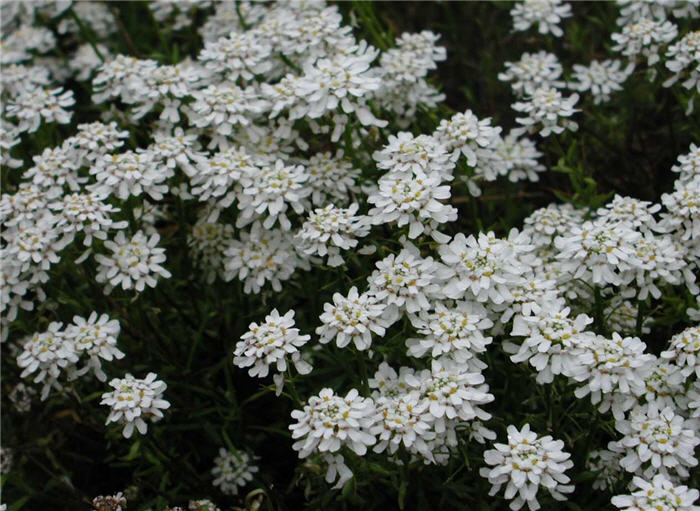| Botanical Name: Iberis sempervirens | |
| Common Name: Candytuft |

-
Anatomy
-
Culture
-
Design
Plant Type
Broadleaf Evergreen, Ground cover, Perennial
Height Range
Under 1', 1-3'
Flower Color
White
Flower Season
Spring
Leaf Color
Dark Green
Bark Color
n/a
Fruit Color
n/a
Fruit Season
n/a
Sun
Full, Half, Shade
Water
Low
Growth Rate
Fast, Moderate
Soil Type
Sandy, Clay, Loam, Rocky, Unparticular
Soil Condition
Average, Rich, Well-drained
Soil pH
Neutral, Basic
Adverse Factors
n/a
Design Styles
English Cottage, Formal, Japanese, Meadow, Mediterranean, Spanish, Woodland
Accenting Features
Showy Flowers
Seasonal Interest
Winter, Spring
Location Uses
Entry, Perennial Border, Parking Strip, Patio, Raised Planter, With Rocks
Special Uses
Container, Filler, Mass Planting, Small Spaces
Attracts Wildlife
n/a
Information by: Stephanie Duer
Photographer: Linda Engstrom
Photographer: Linda Engstrom
-
Description
-
Notes
A profusion of bright white flower clusters above a tidy mound of little, dark green, evergreen leaves makes this a great addition to a perennial border. An early spring bloomer, its clean white flowers are a perfect foil for bright colored spring bulbs. After blooming, shear of spent flowers to encourage more leaf growth and for a tidy green mound. Grows about 12 inches tall and wide.
Grow in full sun to light shade. Needs well drained soil. Shear off spent flowers after blooming to encourage a tidy appearance. Deer and rabbit resistant.